For the past 50+ years, the idea of traveling to Cuba on an American cruise line has been unfathomable. Then, in May of 2016, that idea became a reality – it became fathomable. Justifiably so, the first cruise line granted access into Cuba’s mesmerizing culture is named Fathom. Fathom Impact + Travel, a subsidiary company of Carnival Cruise lines, was created in 2012 and been in business since 2014. Fathom Impact + Travel is the answer to the belief that there is a demographic of travelers that is currently not attracted to cruising. Fathom offers participants the opportunity to travel with a purpose, creating transformative experiences through cultural immersion and person to person opportunities in both Cuba and the Dominican Republic. However, Fathom was created to attract a new demographic of people to cruising, not necessarily to get cruisers to Cuba! Whatever your reason may be, setting sail with Fathom Impact + Travel is a journey to Cuba you will not regret.
I began my week long journey boarding the Adonia, a small cruise ship (700 passenger maximum, although this cruise had only 450 passengers) in Miami to a friendly staff and gorgeous décor from floor to floor. After the typical excitement of being on a cruise ship subsided, I began to investigate what I could learn about Cuba over the next 2 days while we sailed to the country that for many years Americans were not allowed to visit. What was once a dream, was about to become a reality and that was thrilling!!
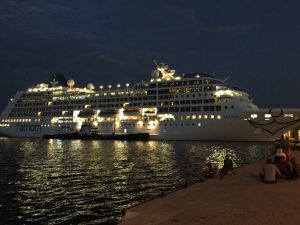 The first seminar was an introduction to Cuba, including topics from culture to social norms. A topic that received a lot of attention was currency. There are 2 forms of currency in Cuba, the CUP (the national coin and the currency in which Cubans are paid) and the CUC, the convertible peso (used by visitors and the currency used for buying goods and services). There are approx. 25 CUP per 1 CUC and close to a 1:1 ratio between the CUC and US dollar, so it was easy to see why much of the country is classified as what Americans would consider impoverished. The easiest way to tell the difference between the CUC and CUP is that CUCs have monuments on them, while CUPs have people on them. We were advised to make sure that when given change, the currency has monuments on them to ensure you are not being ripped off.
The first seminar was an introduction to Cuba, including topics from culture to social norms. A topic that received a lot of attention was currency. There are 2 forms of currency in Cuba, the CUP (the national coin and the currency in which Cubans are paid) and the CUC, the convertible peso (used by visitors and the currency used for buying goods and services). There are approx. 25 CUP per 1 CUC and close to a 1:1 ratio between the CUC and US dollar, so it was easy to see why much of the country is classified as what Americans would consider impoverished. The easiest way to tell the difference between the CUC and CUP is that CUCs have monuments on them, while CUPs have people on them. We were advised to make sure that when given change, the currency has monuments on them to ensure you are not being ripped off.
Cuba charges a 10% tax when converting US dollars, so if you can pull out Canadian Dollars or Euros from the bank prior to visiting Cuba and exchange those to CUCs upon arrival into Cuba you can avoid the 10% tax. Americans are allowed to bring back $400 in souvenir goods (except for cultural and educational materials like books, music and art, which is unlimited). Only $100 of that can account for alcohol and tobacco. It doesn’t sound like a lot, but rum is incredibly cheap (the nicest rum I purchased was a 40 CUC bottle of Santiago rum, aged 11 years – we were told by multiple people, including travel agents and local Cubans, that this was the best!) Smaller bottles cost anywhere as low as 2 and 4 CUCs. Cigars are more expensive, and I imagine are good, but I am not a smoker, so I didn’t look too much into cigars. Cigars are typically 9 CUCs per cigar.
The exception to this $100 limit is on rum and cigars you bring on to the ship to consume before arriving back in the US! Unlike your typical cruise ship, when you bring your alcohol and tobacco on board, the Adonia crew does not confiscate it and return it to you when you arrive back in the US. They allow you to carry it back on board with you and keep it in your stateroom. So on our first day in Cuba, we bought a small bottle of rum or 4 CUCs to sample in our stateroom. The rum was smooth and spicy and unlike any $4 bottle of rum I have ever tasted in the US. It is also a great way to keep your on board costs down, so you are not buying alcoholic beverages every night. Although, the alcoholic beverages on board were not overly priced. My family visited the ship’s wine bar every night before dinner to share a bottle of wine. We found great tasting wines for 25-30 dollars. The prices went up from there. They also offer various sizes of single glasses of wine for decent prices as well.
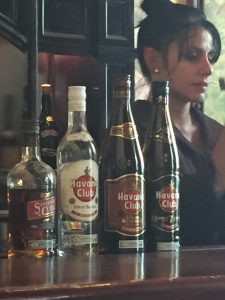 As previously mentioned, rum is extremely cheap in Cuba. We were delighted to find mojitos extremely plentiful and cheap. Mojitos seem to be a national drink of Cuba, and they make them rather strong! Every tour we went on included a visit to a bar for a mojito and also included a complimentary mojito with lunch. The most we ever spent on a mojito on our own (at very nice hotel bars) was 4 CUCs! They are refreshing and a great accompaniment as you take in the spectacular views of the country.
As previously mentioned, rum is extremely cheap in Cuba. We were delighted to find mojitos extremely plentiful and cheap. Mojitos seem to be a national drink of Cuba, and they make them rather strong! Every tour we went on included a visit to a bar for a mojito and also included a complimentary mojito with lunch. The most we ever spent on a mojito on our own (at very nice hotel bars) was 4 CUCs! They are refreshing and a great accompaniment as you take in the spectacular views of the country.
In our intro to Cuba session, we were also warned to negotiate any ride before getting into a taxi. There are multiple forms of taxis in Cuba, ranging from pedi cabs, to coco taxis, to typical taxi cars and the most luxurious old classic American cars. The cars are amazing, and I will make mention of them further into my journey.
Finally, we were advised what the typical tipping structure looked like:
- 4-6 CUCs per person, per day for tour guides,
- 2-3 CUCs per person, per day for drivers,
- 2-3 CUCs to waiters, and
- 1 CUC or less to street performers for photos.
Upon further investigating, we learned that these tips accounted for a large sum of a Cuban workers daily income (since they are getting paid in CUCs rather than CUPs).
Our second day of educational at sea programming included a session on Cuban history before the 20th century and a look into capturing photography on the street. After feeling better equipped with new knowledge about Cuba, we were ready to venture out into what would prove to be an amazing country with delightfully friendly people.
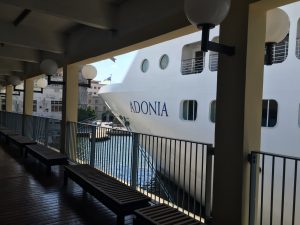 A few final thoughts about Fathom Impact + Travel before moving on to the next pieces about each city. The crew on the Adonia is incredible. Unlike any cruise line I have ever been on before, the typical hierarchal structure common on other luxury lines is much less evident. The crew is engaging and interactive with the passengers and each other. The Impact Guides (similar to activity staff) actively participated in activities both on the ship and on land. At the end of each day, when we boarded back onto the ship, they not only greeted us with smiles, but asked us how our day went and engaged in meaningful conversations about our experiences. One evening we had a karaoke night in the lounge, and the crew members sang songs alongside the passengers! We also noticed the Captain of the ship was a lot more visible throughout the cruise. To our (very pleasant) surprise, the Captain of the Adonia is a woman. In my 15 years of cruising, this was my first cruise with a female captain and it was extremely refreshing and inspiring. She was seen casually schmoozing with patrons in the lounges and bars on board, or roaming the halls and always asked how the day was going when passing by a passenger. The Adonia and Fathom are setting a new standard of cruising.
A few final thoughts about Fathom Impact + Travel before moving on to the next pieces about each city. The crew on the Adonia is incredible. Unlike any cruise line I have ever been on before, the typical hierarchal structure common on other luxury lines is much less evident. The crew is engaging and interactive with the passengers and each other. The Impact Guides (similar to activity staff) actively participated in activities both on the ship and on land. At the end of each day, when we boarded back onto the ship, they not only greeted us with smiles, but asked us how our day went and engaged in meaningful conversations about our experiences. One evening we had a karaoke night in the lounge, and the crew members sang songs alongside the passengers! We also noticed the Captain of the ship was a lot more visible throughout the cruise. To our (very pleasant) surprise, the Captain of the Adonia is a woman. In my 15 years of cruising, this was my first cruise with a female captain and it was extremely refreshing and inspiring. She was seen casually schmoozing with patrons in the lounges and bars on board, or roaming the halls and always asked how the day was going when passing by a passenger. The Adonia and Fathom are setting a new standard of cruising.
I asked one of the Impact Guides about my observation and he shared that the staff was encouraged to get to know the passengers in this way. If the culture of Fathom is going to be to create people to people experiences for the passengers with the local Cuban people, that needed to start on board the ship and be a theme throughout every aspect of the cruise experience. It is definitely a nice change from the type of cruising I am used to. This culture truly sets the tone for a most meaningful land experience in Cuba. By the end of day two, we went to bed eager to see what Cuba had in store for us!
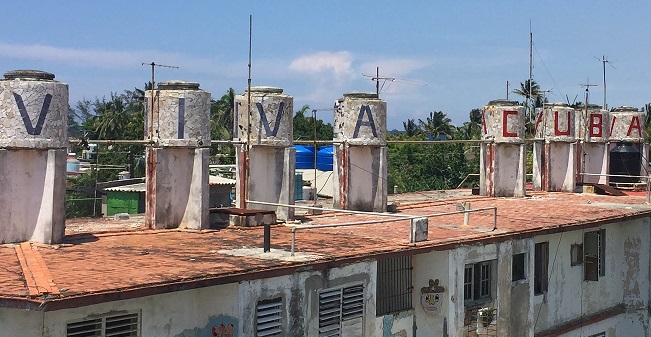
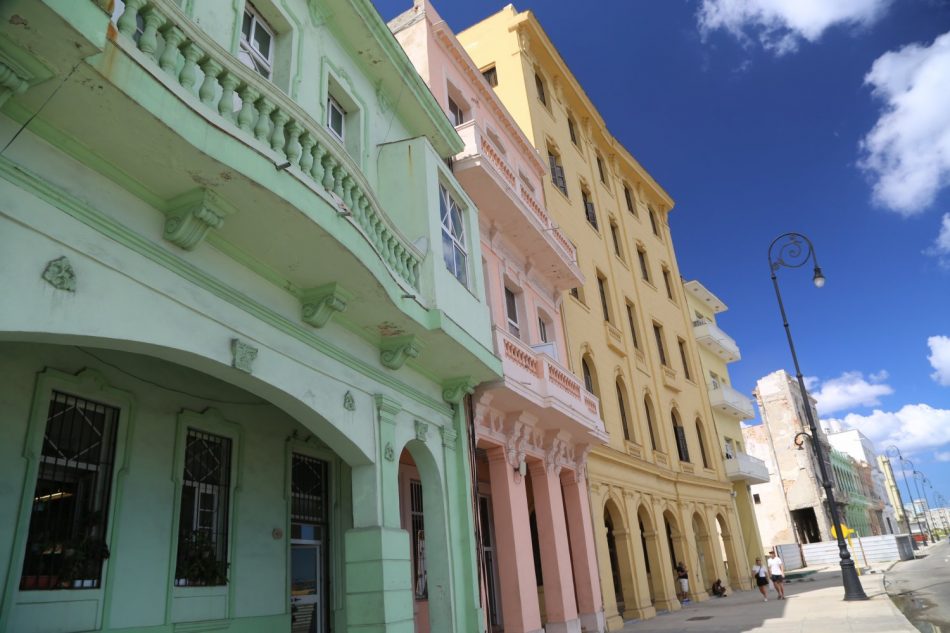





Excellent article, Jessica. We enjoyed it very much – – also your pictures. Thanks for the currency information. We plan a cruise to Cuba in 2017.
M & G
NYC
Michael – sounds like a good plan. Cuba is also on my list to visit at some point. ~ Dave